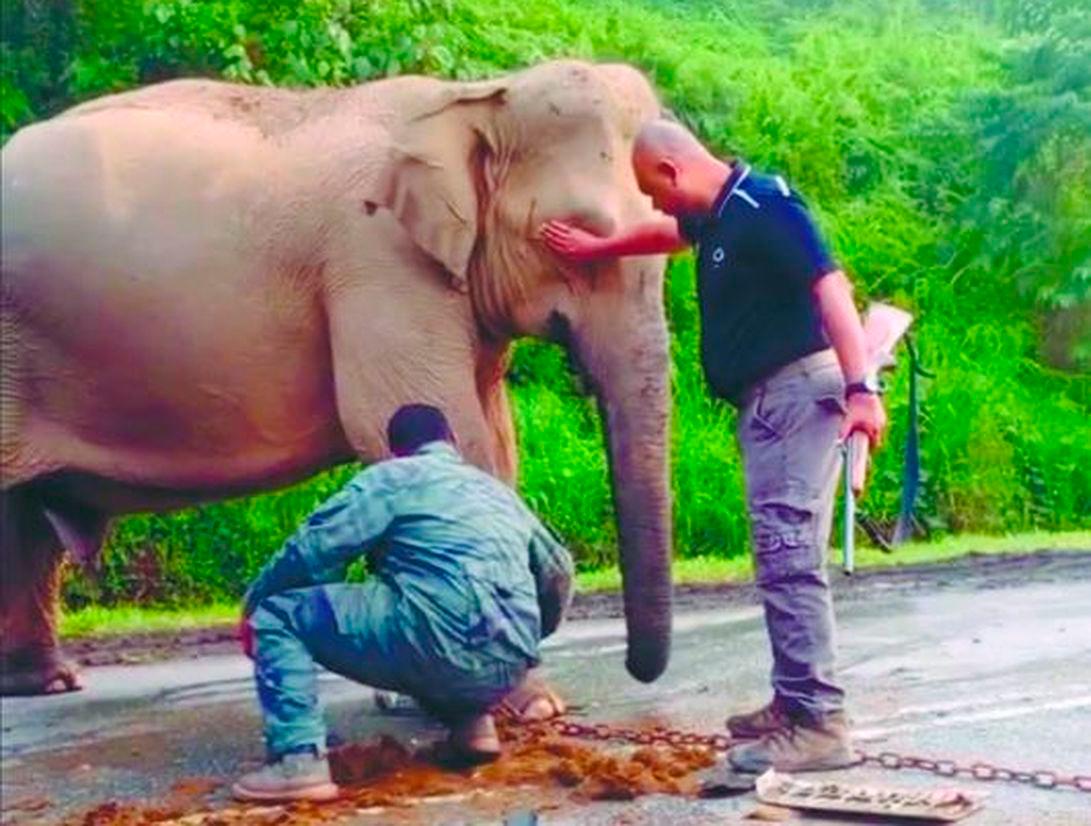PETALING JAYA: The death of a baby elephant along the Gerik-Jeli Highway on Sunday has sparked widespread outrage online, with renewed calls for improved road safety measures to protect wildlife.
The elephant calf was killed after being struck by a lorry transporting chickens. Videos shared on social media showed the calf’s mother standing beside the body, which was pinned under the vehicle for more than five hours, refusing to leave the scene.
The incident has intensified public pressure on authorities to enforce stricter regulations and promote cross-agency cooperation to reduce wildlife fatalities on Malaysian highways.
Speaking to theSun, wildlife documentary producer and NGO Rimau president Lara Ariffin said the tragedy reflects deeper environmental issues, particularly habitat fragmentation and forest encroachment, which are forcing wildlife to cross major roads.
“Malaysia now has only a tiny portion of its forest cover left, and much of that is already fragmented.
“When roads like the Gerik-Jeli Highway cut through forest corridors, wildlife such as elephants and tigers are left with no choice but to cross them in search of food or to reach other forested areas,” she said.
The Gerik-Jeli Highway, also known as the East-West Highway, has seen repeated wildlife crossings and fatalities over the years. Hence, Lara believes more serious interventions are needed beyond roadside signboards and awareness campaigns.
“We need to implement speed traps and bumps along the route to slow down traffic,” she said, noting that many vehicles travel well above the permitted speed limit.”
She suggested that relevant authorities, including the Transport Ministry, Public Works Department and police, must work more closely with the Wildlife and National Parks Department to introduce targeted enforcement in key crossing zones.
“This cannot be the responsibility of the wildlife department alone. It requires coordinated government action,” she said.
The wildlife advocate described the death of the calf as “heartbreaking”, adding that such incidents underscore the emotional capacity of wildlife and the toll development takes on their survival.
When asked about immediate policy recommendations, Lara emphasised the urgency of enforcing traffic controls along the East-West Highway.
“Apart from speed traps and bumps, enforcement and penalties – these are not difficult to implement. They should be a priority.”
On public safety, Lara advised motorists to remain alert and avoid provoking animals encountered on the road.
“Do not honk, do not harass. Simply slow down and drive past. If an injured animal is spotted, especially a tiger, report it immediately to the wildlife department. Do not attempt to engage with it.”
She added that the Gerik-Jeli Highway is no ordinary road and must be approached with caution.
“This is a critical crossing for wildlife. Without better regulation and awareness, more animals will continue to die.”
Echoing similar opinion, animal welfare advocate Tan Sri Lee Lam Thye said wildlife crossings are crucial in preventing tragic incidents involving animals being struck by vehicles while attempting to cross roads in search of food.
In a statement, Lee said such collisions not only lead to the loss of valuable wildlife but also pose serious risks to motorists, potentially resulting in injuries and, in some cases, fatalities.
He also urged the authorities to take immediate action to protect both wildlife and road users to significantly reduce such accidents.
Among the measures he proposed was the construction of dedicated wildlife overpass or underpass in areas with frequent animal movement, particularly near forested regions.
“The crossings should be designed based on the movement patterns of local species such as tapirs, elephants, and other vulnerable wildlife,” he said.
Lee added that authorities should also consider installing fencing along highways to direct animals toward designated crossing points and prevent them from straying onto roads.
He also emphasised the importance of public education on wildlife conservation and the need for cautious driving in areas known to be inhabited by wildlife.
“By investing in wildlife crossings and taking proactive measures to protect our natural heritage, we can ensure the safety of both our wildlife and our citizens. The time to act is now, before more lives, human and animal, are lost to preventable accidents,” he added.









